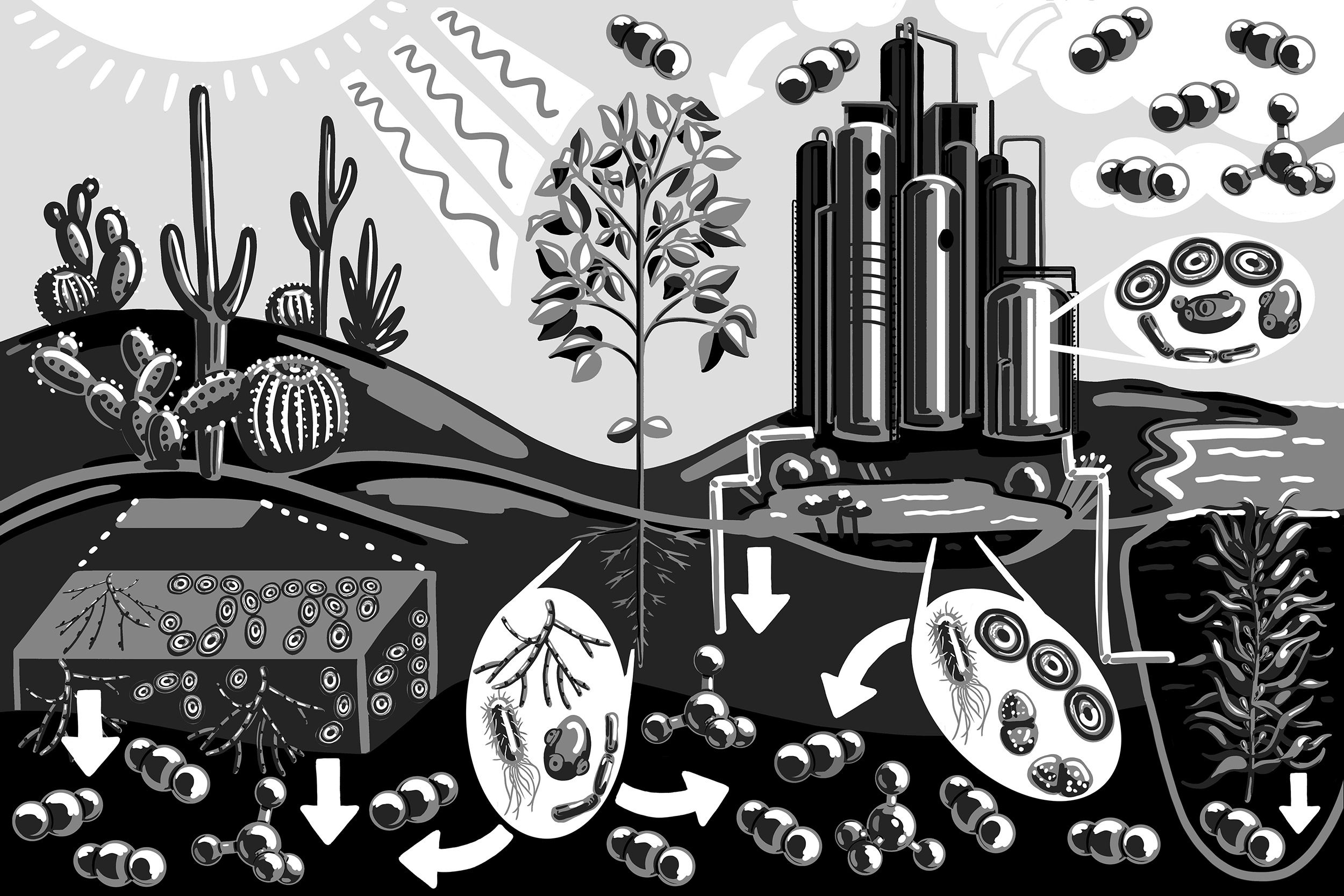Engineering Biology for Climate & Sustainability
Biosequestration of Greenhouse Gases
Biosequestration of Greenhouse Gases addresses engineering biology opportunities to capture and remove carbon dioxide, methane, and other harmful gases from the atmosphere and enable and strengthen carbon storage and conversion.
Introduction
Analysis by the Intergovernmental Panel on Climate Change (IPCC) shows that carbon dioxide removal (CDR), the process of removing and sequestering climate-damaging greenhouse gas (GHG) carbon dioxide (CO2) from the atmosphere, is a crucial component to keeping global warming under 1.5oC and achieving U.S. and global emissions reduction targets by 2050. While Earth’s land and ocean absorb roughly 50% of annual global CO2 emissions,, the capacity for the biosphere to capture carbon is shrinking. Engineering biology could restore, or even increase, the biosphere’s carbon uptake and the sequestration or removal of GHGs or other emissions that lead to increased GHG accumulation in the atmosphere, including methane (CH4), nitrous oxide (NOX), carbon oxides (CO, CO2), and fluorinated gases. Engineering biology opportunities considered in this technical theme aim to capture, convert, and remove GHGs, including through improved photosynthetic efficiency, advancements and novel approaches for carbon fixation, and the recycling of captured carbon into value-added products.

Enabling the large-scale biosequestration of greenhouse gases. Engineering biology can contribute to improved capture and uptake of climate-damaging greenhouse gases (GHGs), including carbon dioxide, nitrous oxide, and methane, from the atmosphere and point-sources, such as industrial emissions. Advancements in the engineering of microbes, plants, and algae can help to sequester and store carbon in soils and other long-term carbon sinks, and to convert captured carbon into value-added chemicals and materials. Existing natural carbon storage could also be enhanced with engineering biology, increasing carbon sequestration capacity of soils, biocrusts, and marine environments. To do so, advancements need to be made in photosynthesis efficiency, design and engineering of carbon conversion enzymes, and organic GHG utilization capacity.
Engineering biology could be used to engineer plants to store more carbon in their root systems or to engineer soil microbiomes and natural biocrusts to sequester larger amounts of carbon. This roadmap also addresses opportunities to deploy ice-nucleating microbes to maintain ice and snowpack, increasing albedo (reflection of light away from the earth) and helping prevent the thawing of permafrost, which stores massive amounts of carbon. Finally, this roadmap considers approaches to enhance ocean and coastal carbon capacity, such as through engineered macroalgae.
As with other carbon removal technologies, biobased carbon capture is neither a replacement for drastic emissions reduction nor a justification for delaying climate actions, and must be developed in conjunction with other approaches to deep decarbonization. This roadmap presents only a selection of potential engineering biology technologies that can be part of the solution and should be accompanied by research and development in ecology, geophysics, oceanography, agronomy, and many other fields. In addition, engineering biology-enabled carbon capture faces unique environmental implications that must be addressed, including the biocontainment of engineered organisms and the potential for competition between engineered organisms and non-engineered, native organisms.
Carbon sequestration in Engineering Biology
EBRC first addressed carbon sequestration in Engineering Biology: A Research Roadmap for the Next-Generation Bioeconomy, published in 2019. Objectives included engineering soils to better sequester carbon, engineering plants for increased CO2 removal, removing and recycling methane with engineered organisms and engineering marine microbes for long-term carbon storage.
View →
